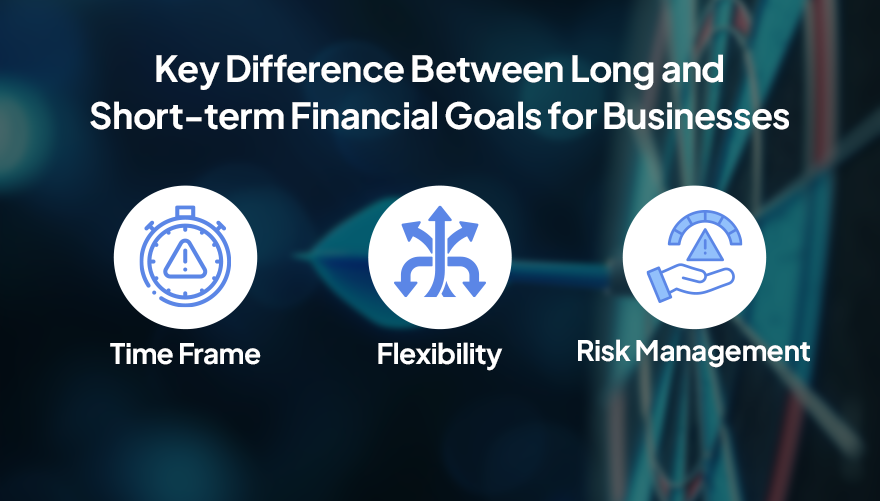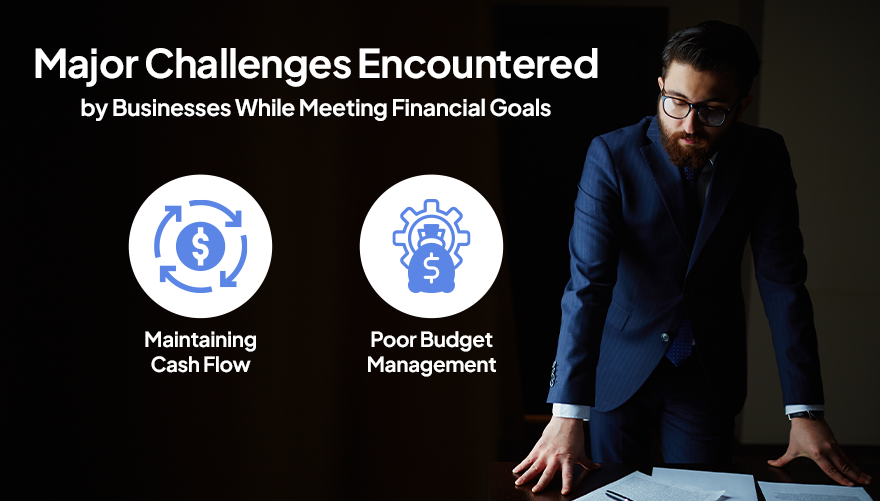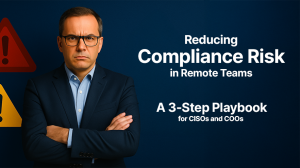Table of Contents
A sustainable business operation requires a multifaceted approach of strategy, cash flow, employee management, and adapting to ever-evolving market demands. Financial management is one of the most important aspects of maintaining a sustainable business. Approximately 90% of startups fail in the initial phase, with around 16% of failures happening due to poor financial management.
For example, if you are planning to start a business, you must have resilience, cash flow management, and SMART financial goals to survive and rise above the edge of the competition. It includes payroll, managing employees, customer satisfaction, and a dynamic environment.
Business owners may find it challenging to cope with responsibilities and manually manage financial strategies. Finding a balance between immediate needs and long-term goals is vital but challenging. Most entrepreneurs struggle to decide between immediate sales increases and long-term development strategies.
This blog will guide you through the difference between short-term goals and long-term goals so owners can guide their business path more confidently.
What are Short-Term Goals for Businesses?
Short-term objectives are objectives companies try to accomplish within a short period, usually within a few months up to two years. They are working steps that meet every day and month-by-month needs, like the sales rise of 10% within three months or the reduction of office expenses within six months. Short-term goals solve immediate issues, enhance day-to-day performance, and build small wins, maintaining momentum. They also channel employee activity toward a common objective.
What are Long-Term Goals for Businesses?
They create growth, positioning in the marketplace, and long-term success. Long-term goals can also include investments in technology, creating a brand reputation, and growing profits significantly. They give a business a clear vision for the future, allowing business owners and teams to stay focused despite day-to-day challenges. Additionally, they guide important decisions on finances, people, and resources. Short-term goals may ensure day-to-day operations are successful, but long-term goals promote growth and competitiveness, inspiring teams by showing them the larger purpose of their work.
What is the Key Difference Between Long and Short-term Financial Goals for Businesses

Businesses must make a SMART financial goal for sustainable growth. Most of them often find it difficult to understand the thin line of difference between short and long-term goals.
- Time Frame
The time horizon determines the duration a company wants to accomplish its financial objectives, differentiating between short-term and long-term goals.
Short-term goals, usually established for a few months to 2 years, are concerned with immediate, achievable objectives that support day-to-day operations, sales enhancement, or cash flow management, such as raising monthly revenue or reducing costs.
On the other hand, long-term objectives, which are more than 3 years, represent sizeable plans like market expansion, product launches, or brand development. Combined, these objectives provide well-rounded strategies for short-term gains and long-term success.

Optimize Your Business Performance with wAnywhere
With wAnywhere’s powerful analytics and time tracking tools, you can manage both short-term and long-term financial goals more effectively.
- Flexibility
Business flexibility is the capacity to adapt financial targets in the face of change, separating short-term from long-term targets. Short-term targets, focused on present needs, enable rapid adaptation to unforeseen occurrences, such as sudden drops in sales or emerging opportunities, facilitating rapid changes in targets or costs.
While long-term objectives are less fluid, requiring substantial time, money, and planning for changes, like postponing a new branch opening. While flexibility is essential, it’s also essential that companies stick to their long-term goals to ensure sustainable growth.
- Risk Management
Risk management covers potential issues that affect a business. Short-term financial objectives have less risk with immediate results, which allow for easy monitoring and corrections, such as a 10% increase in sales within a month.
Long-term objectives are more vulnerable to risks associated with market performance and trends over time, such as establishing a new outlet. Good risk management is carried out with an equal balance, where short-term profits facilitate long-term expansion through planning and observation.
Major Challenges Encountered by Businesses While Meeting Financial Goals

Businesses often face challenges of maintaining sufficient cash flow, adapting to market trends, and poor budget management.
- Maintaining Cash Flow
It is difficult to have a consistent cash flow, particularly with continuous expenses despite declining sales. Slow payments can lead to financial pressure, preventing a business from paying bills, investing, or expanding. Proper cash flow management is important to pay for everyday expenses, maintain stability, and achieve financial objectives.
- Poor Budget Management
A budget is a money plan that directs companies on how to spend and save money. Bad budgeting can result in overspending, overestimating income, and being unable to pay bills, invest in growth, or cover unexpected expenses. Good budgeting enables companies to spend money wisely, cut waste, and remain on course to accomplish small and large financial objectives.
Proven Tips to Align Both for Sustainable Business Growth

If both are utilized together, companies can handle everyday operations while advancing towards larger ambitions. It keeps risks at bay, enhances decision-making, and remains adaptable to evolving markets.
- Use SMART Methods
The SMART method is a technique employed by organizations to make set goals clear, realistic, and attainable. It is an acronym for Specific, Measurable, Achievable, Relevant, and Time-bound. The process makes each action worthwhile, keeps the organization on track, enhances financial management, and facilitates sustainable growth in the long run.
Streamline your business operations and align your short-term and long-term financial goals with real-time performance insights.

Enhance Your Business Operations with wAnywhere
Streamline your business operations and align your short-term and long-term financial goals with real-time performance insights.
- Create Adaptable Financial Goals to Meet Market Demands
Companies must adjust their financial objectives to keep pace with evolving markets. Flexible goals allow companies to modify plans due to the customers, market trends, or financial conditions. Flexibility enables companies to avoid losses and act fast on emerging opportunities, promoting stability, satisfying customer requirements, and progressing amidst uncertain market environments.
- Invest in Cutting Edge and AI-powered Business Management Software
Investing in business management software can automate operations, finance, and planning for contemporary businesses. Such software provides real-time reports, precise forecasts, and intelligent suggestions to monitor expenses, cash flow, and make more informed financial decisions. AI can detect problems early on, enhance profits, and lower costs, allowing businesses to grow sustainably and remain ahead of competitors.
How wAnywhere Can Help Businesses Meet Financial Goals
wAnywhere boost operational effectiveness and productivity. It provides capabilities such as time tracking, activity monitoring, and actionable workforce analytics, enabling businesses to gain insights on employee performance, resource utilization, and process effectiveness.
This enables them to make data-driven decisions to minimize costs and streamline workflows. wAnywhere also facilitates the management of hybrid workspaces, keeping remote and in-office employees productive. The data-driven dashboard enables companies to monitor short-term performance and amend long-term strategy. In the long run, wAnywhere enables companies to streamline functions, cut costs, and maximize resource allocation to ensure sustainable development.
Conclusion
Managing a sustainable business can be overwhelming, and most fail during their initial phase. SMART financial strategies to adapt to the market trends and experience sustainable growth. The short-term goals are generally adopted for achieving goals like every day need whereas long-term goals are planned to meet broader goals, such as building a team and a remarkable product or service.
However, businesses often fail to manage cash flow and adapt to growing market trends and customer demand. wAnywhere, our innovative AI-powered business and employee management software automates tasks, cuts costs, and assigns resources more optimally, which are all central to achieving near-term and future financial objectives.

Take the First Step Toward Financial Growth with wAnywhere
Ready to transform your financial strategy? Enhance your operations, reduce costs, and maximize efficiency.












